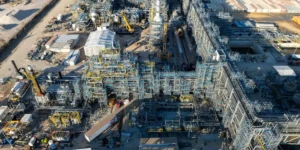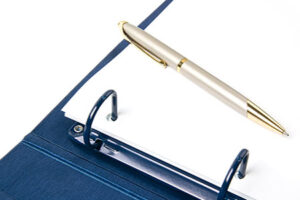ArcelorMittal set for €1.3bn grant for green-hydrogen steel project — days after firm said H2 is too expensive to use

The EU has approved a plan by the German government to grant steel giant ArcelorMittal €1.3bn ($1.4bn) to partially decarbonise two of its steel mills with equipment designed to use green hydrogen — despite the company saying last week that such technology is too expensive to operate with renewable H2 in Europe.
The Luxembourg-headquartered company will receive the direct grant from Berlin to construct one “direct-reduced iron” (DRI) plant (see panel below) and three electric arc furnaces across two of its steel plants in Bremen in northwest Germany, and Eisenhüttenstadt, close to the border with Poland in the east.
Steel producers are hoping to use hydrogen to decarbonise their steel mills, which together account for 7-8% of all global carbon emissions.
Traditionally, iron has been extracted from iron-oxide ore by burning carbon-rich coking coal in a blast furnace, where the fossil fuel produces high-temperature heat while simultaneously removing oxygen from the ore by converting it to carbon dioxide.
This highly polluting method can be replaced with green hydrogen in a direct-reduced iron (DRI) facility, where the H2 reacts with the oxygen to produce steam (H2O) rather than carbon dioxide.
In fact, hydrogen-based DRI is currently the only proven pathway of decarbonising steel production, when paired with an electric arc furnace powered by renewable energy.
But DRI plants can also be fuelled with cheaper fossil gas, reducing carbon emissions compared to a coke-fuelled blast furnace, but not eliminating them.
Policymakers want producers to eliminate emissions from the sector by using green-hydrogen DRI that is then turned into green steel using renewables-powered electric arc furnaces, but with green H2 costing in excess of €5/kg in Europe, the commercial proposition is difficult to make, even with subsidies.
The new infrastructure will replace two of the three coal-fired blast furnaces (typically used for iron-making) operating at ArcelorMittal’s two sites, and two of the four basic oxygen furnaces (used to make steel from iron).
If realised, operations will commence in 2026, with the new units producing a combined 3.8 million tonnes of crude steel per year, the EU said, substituting the same amount of steel made at the plants though the more polluting methods.
When ArcelorMittal first announced plans to decarbonise Bremen and Eisenhüttenstadt in 2021, it envisaged building a new DRI unit at each of the two sites, however this appears to have shelved in favour of a single unit in Bremen, where the regional government of Bremen is contributing €250m to the overall €1.3bn pot.
The Bremen plant would then supply DRI to an electric arc furnace within the complex, as well as to the two new electric arc furnaces installed at Eisenhüttenstadt.
Article continues below the advert
Ultimately, the DRI plant is intended to operate using green hydrogen, in order to dramatically reduce emissions, which ArcelorMittal expects to decline by 70 million tonnes by 2041.
But in keeping with several other of ArcelorMittal’s steel decarbonisation projects, the DRI plant will at first operate on fossil gas, with no definite timeline to switch to renewable hydrogen, raising the question of whether they will ever fully decarbonise and opening the company up to accusations of greenwash.
The question is even more pressing given that the head of ArcelorMittal’s European arm, Geert van Poelvoorde, said last week that using green hydrogen in its EU steel mills is not profitable — meaning that not only is the switch to green H2 unlikely, but that its subsidised DRI plants may not even get built in the first place.
Instead, the company is considering importing DRI from other countries where green hydrogen production is cheaper, he said.
This is despite the company lining up more than €1.6bn in subsidies to build decarbonisation infrastructure at the time of van Poelvoorde’s interview — a figure that has nearly doubled to €2.9bn on today’s EU approval.
“The decarbonisation of heavy industry is key for achieving the green transition,” said Margrethe Vestager, the European Commission’s executive vice-president in charge of competition policy.
“This €1.3bn German measure enables ArcelorMittal to decarbonise its steel production sites of Bremen and Eisenhüttenstadt through the use of hydrogen. By making steelmaking greener, it helps to achieve the EU’s target of climate neutrality by 2050. At the same time, the measure ensures that possible competition distortions remain limited.”





